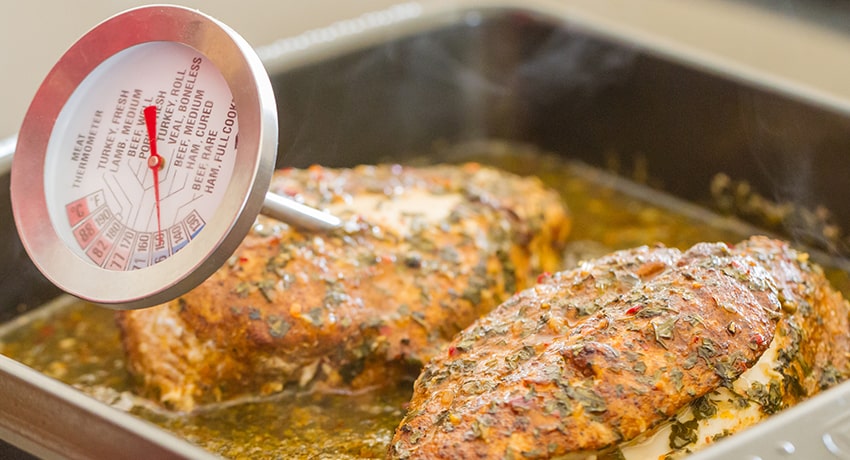When cooking a meal, we consider measurements, baking times and countless other things. Something that might slip our mind is if we prepared the meal safely. Have we cross contaminated? Did we wash our hands long enough?
To stay safe while cooking dinner, refer to the four C’s of food safety: clean, contain, cook and chill.
Clean
Cleaning is the first step to keep you on track when it comes to food preparation and safety. It’s important to clean your hands and all surfaces that will be used while cooking your meal, including cutting boards, counter tops, knives, etc. This is especially important if you are handling ingredients that will not be cooked, like salad. “Before cooking, wash your hands in warm soapy water for at least 20 seconds. Wash your hands and surfaces thoroughly after you handle food, especially after touching raw meat,” said Chris Mackenzie, PhD, assistant professor in the Department of Microbiology and Molecular Genetics at McGovern Medical School at UTHealth.
Contain
Containment is key to preventing cross contamination. Cutting boards and cooking utensils used for raw meat and seafood should be kept separate from all other ingredients. E. coli can live on a surface for up to 24 hours. Immediately throwing away the packaging from meat and poultry can help reduce your risk of contaminating your cooking area.
Cook
To kill bacteria that can cause food poisoning, it is important to cook all meat, poultry and seafood properly. Depending on what you are preparing, cooking times will vary. A meat thermometer can help you determine that the internal temperature of your meal has reached a safe temperature to eat. After each use, you should wash your meat thermometer in hot, soapy water to kill any bacteria.
Chill
Once your meal is cooked, leftovers should be cooled down as quickly as possible. “If you are preparing a big batch of food that will last for a few meals, box them into several containers (preferable shallow boxes, so they can cool down fast in the fridge or freezer). Do all this while the food is still hot,” said Mackenzie. Leftovers in the fridge should be eaten or thrown within three days.



